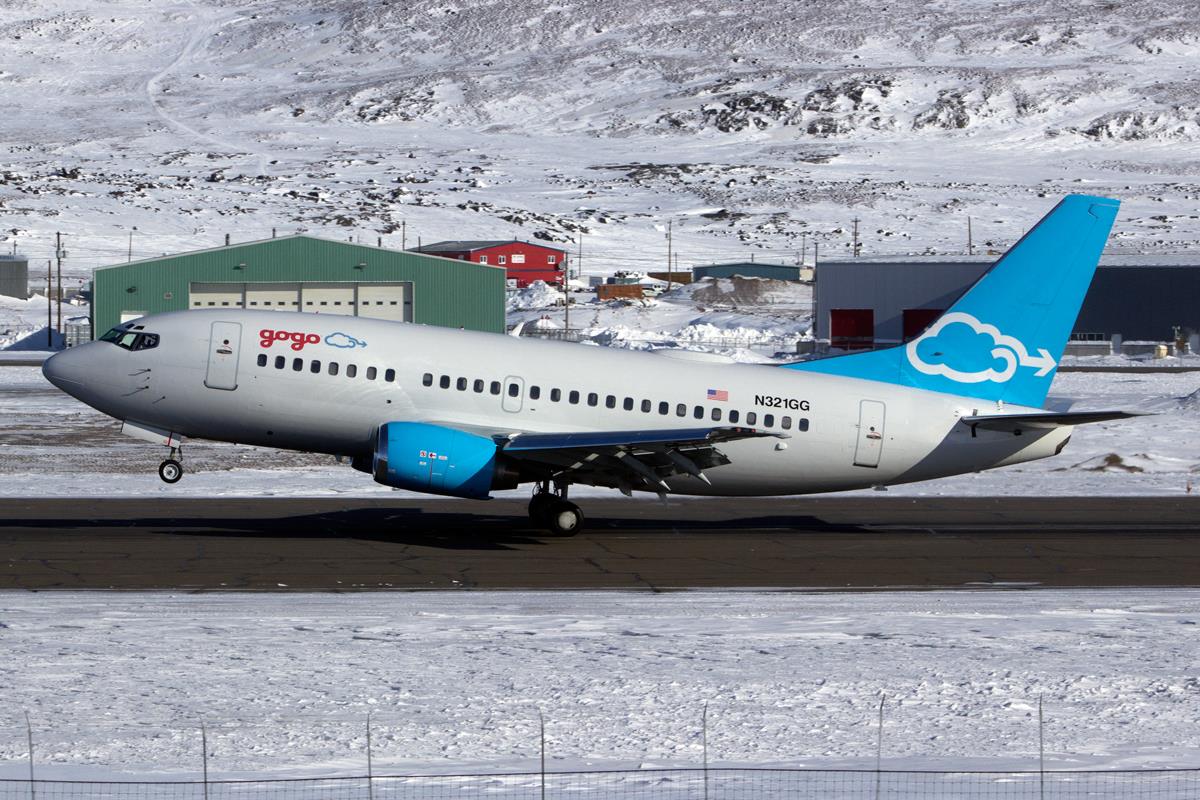
(Gogo)
Gogo’s ability to remain the world’s largest provider of in-flight internet service could depend on the flexible architecture it has built into several elements of its business and commercial aircraft connectivity technology. During the company’s second-quarter earnings call, CEO Oakleigh Thorne addressed its 2Ku antenna de-icing issues, financial challenges and future business model changes for the company.
Gogo has been facing major financial and technological challenges throughout 2018. Financially, revenue from in-flight internet service on commercial airlines has been down. In contrast, equipment and service revenue for its business aviation division has increased. According to Thorne, Gogo’s ownership team has received a “number of strategic inquires” from financial and strategic companies in recent months.
“As we said on our last call, our board has considered those inquiries and ask management to assess them,” he said. “We don’t have an update to provide on those matters today rather than to say management is assessing various opportunities as requested by our board.”
Technologically, the company’s 2Ku antennas have experienced de-icing problems that affected their performance in cold weather. On the earnings call, Thorne confirmed that the antenna deicing fluid issue was resolved, with Gogo replacing all affected antennas between April and June.
The chief executive said the de-icing issue was resolved with a series of software upgrades, though there is still more work to be done to avoid future degradation. Replacement antennas are still going through quality and safety testing.
While not giving many details, Thorne said Gogo has additional safeguards to add to the antennas to prevent future de-icing issues. Some of the new safeguards will be put in place later this month, and installations are expected to be complete by winter, according to Thorne.
“Some other solutions are more complex and will require us to rotate updated antenna stock out to airlines to be installed overnight. Those uninstalls will begin in September and could well drag through the winter,” said Thorne.
More details on the de-icing issues were provided in the 10-Q filed by Gogo along with its second quarter earnings report. The in-flight internet provider noted that delays and quality problems occurred from moisture and liquids entering into their antennas primarily caused by aircraft de-icing procedures.
Despite the de-icing issues though, Gogo still believes its antennas offer the type of flexibility that airlines and OEMs are seeking when equipping their aircraft with IFC technology.
“It has a relatively cheap upgrade path to LEO (low Earth orbit) compatibility, which would enable our airline partners to take advantage of cheaper and lower-latency LEO constellations such as OneWeb when they launch in the future,” Thorne said.
OneWeb has the potential to become a major disruptor within the satellite communications industry. The company is developing a constellation of 900 LEO communications satellites designed to address many of the IFC issues that plague aircraft internet reliability and performance today, including capacity, latency and costs.
A major challenge experienced by airlines that have equipped their aircraft with in-flight internet technology in recent years is the reality that newer, faster antennas, modems and satellite and air to ground networks are being introduced on a one- to two-year cycle. That makes it difficult to constantly feature the newest and fastest connectivity technology in airplanes, which are operated on 20- to 30-year life cycles.
Upgrading to new connectivity technology costs airlines millions and, in some cases, requires grounding of in-service planes. Presentations by both Airbus and Boeing at the 2018 annual Airlines Electronic Engineering Committee (AEEC) and Avionics Maintenance Committee (AMC) general session detailed the type of flexible architecture the two OEMs are seeking in line-fit connectivity equipment.
Thorne used the earnings call to position Gogo’s business aviation aircraft technology as featuring a scalable and flexible architecture as well. The company’s AVANCE L5 and L3 systems helped produce second-quarter revenue of $74.2 million for its BizAv division, a 28% increase compared to the same period in 2017. AVANCE is Gogo’s smart router technology that features network management, cloud-based service support and smartphone text and talk capabilities.
Gogo believes their ability to enable new functionality in AVANCE with software updates will help the company win more business aircraft customers in the future.
“The [AVANCE] L5 and L3 share a common architecture that will enable us to remotely install future product up-sells without having to install new equipment,” said Thorne.